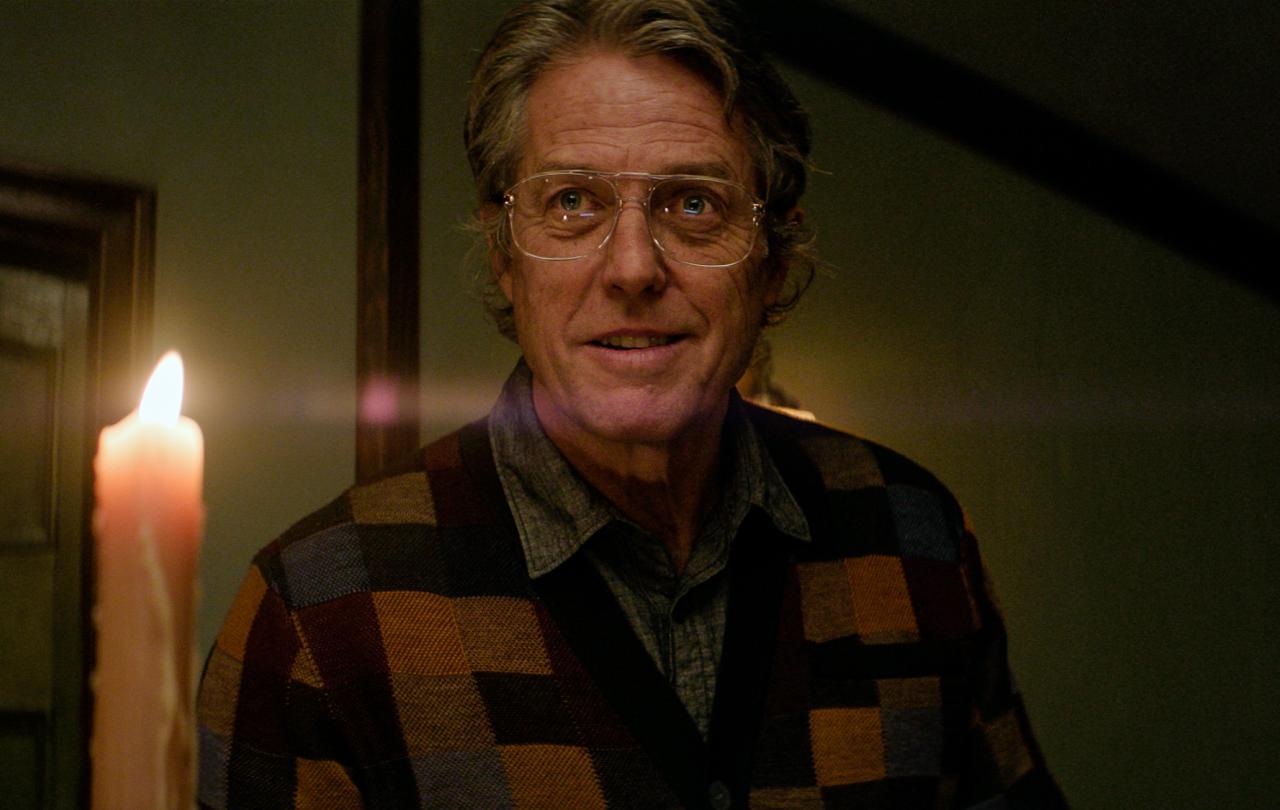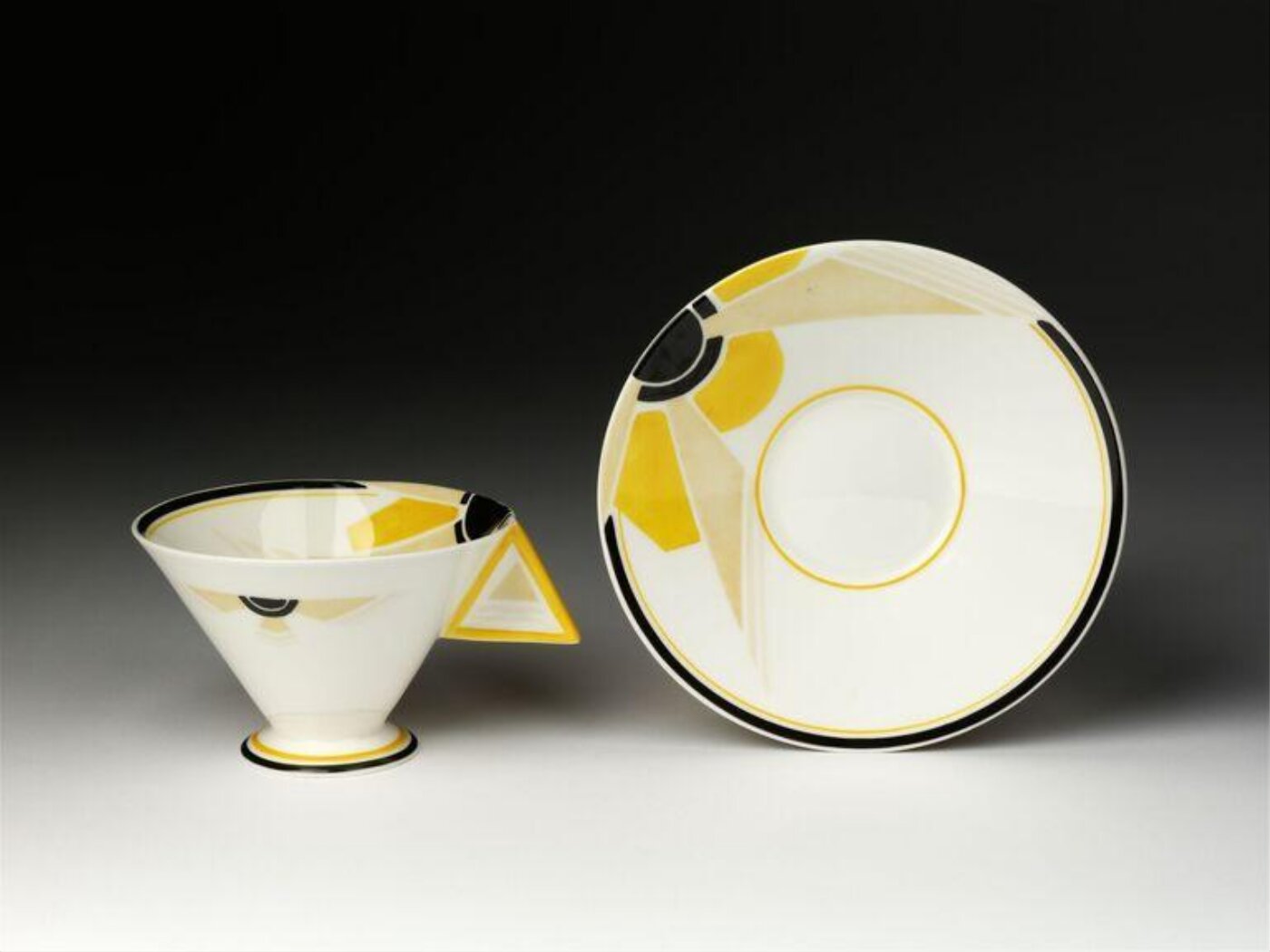
Halloween night: the perfect setting for a horror film. Religious horror: the perfect horror sub-genre. The supernatural invading the natural, darkness swallowing the light, tension and suspense assaulting the placidity we all crave, and doubt gnawing away at faith. All these reversals of the order we try to live in are on offer in Heretic. This is a ghoulish and ghastly offering from writer/directors Scott Beck and Bryan Woods, who are no strangers to the genre. In Heretic they bring the best that horror cinema has to offer: simplicity.
The plot and script are lean enough to effortlessly perform the twists and contortions needed to keep the viewer off-guard and on the edge of their seat. The script is tight, with some wonderful opportunities to soliloquise and dialogue that is deliciously awkward and painful. The camera work is almost cruel in its relentlessness. This is not a film of jump scares. Here the camera lingers, and lingers…and lingers. Tight close ups on frightened faces and sinister smiles. Slow pans round a room, promising a sudden shock of relief that never comes – only more anxiety.
The camera refuses to make the experience easy, but insists on letting the atmosphere and semiotics drive the audience to the point of tears. Such a focused and aggressive camera needs performers who won’t shy away but will grab it and wrestle with it! Thankfully, the performances are superb across the board. It's basically a three-hander, carried by Sophie East, Chloe Thatcher, and the indominable Hugh Grant (more about him later).
East and Thatcher play two young Mormon missionaries – Sister Paxton and Sister Barnes - who spend their days walking the streets of a small American town in the mountains. In between dispiriting attempts to communicate their faith with an apathetic and even derisive public, they wile away the hours discussing their faith, their hopes and dreams, the perception of Mormonism in the popular culture, and the marketing of ‘magnum condoms’. Sister Paxton is earnest and zealous, desperate to prove herself as a missionary by converting at least one person. Sister Barnes is a little more reserved, almost cynical. There is less fervour, a hint of weariness, even the lurking sense of doubt?
The two young ladies end an exhausting day with a visit to an isolated mountain-top cottage where they believe the seemingly kindly and bumbling English gent, Mr. Reed, is a prospective convert. Who else bumbles like Hugh Grant? It’s a joy to watch. What they hope will be a pleasant chat about their faith slowly descends into a horrifying and twisted psychological torture session, where the concepts of faith, doubt, religion, prophesy, and institutional thinking are all examined.
I dare not say much more. This is a film which hides its twists well and uses the mundanities of blueberry pie and Monopoly to chillingly hilarious effect.
However…
Having heaped praise upon praise, I must admit that I left the cinema feeling slightly disappointed. I love horror cinema. I love religion – so much so that I’ve made it my day job. I love them in combination that appears pretty frequently, from the giddy heights of The Exorcist to the drudgery that is The Exorcist: Believer. This means that most of the themes that can be explored have been explored. Originality is nearly impossible, and not really necessary – but exploring the themes with sincerity and agility would be nice. The script might be acrobatic, but the thematic exposition is about as plodding as a tranquilised elephant with a limp.
It is bad.
Again, I don’t want to give the twists and turns away, but quite quickly a dissonance between the brilliance of the dialogue and the turgidity of the theme appears, and it doesn’t…go…away! What is faith and what is doubt? Good. What is belief and what is disbelief? Good. No. Scrap that. ‘RELIGION IS ALL JUST MAN MADE!’ Okay, we could explore that. ‘NO. JESUS IS BASICALLY HORUS.’ Right, but let’s tease out the nuance. ‘NO! RELIGION IS JUST A SYSTEM OF CONTROL!’
Mr Reed suddenly morphs into the most tiresome bore. A cross between the theological illiteracy of Dawkins and the pathological obsession with power of Foucault. It is possible that this is part of the point – that this was intended to be a witty and incisive invective against institutionalism (especially institutionalised misogyny), and the ladies do land some philosophical counterpunches which expose the emptiness of Mr Reed’s rantings – but it just wasn’t done subtly or adeptly enough. What promises to be a thematic exposition of the nature of belief turns into a fairly lumbering and ponderous lecture on how belief full-stop is a ‘system of control’. We get it. We’ve been hearing this for centuries, and at a new fever pitch since the early noughties. Again…originality isn’t essential if the same old theme is explored well. I just didn’t feel it was. I felt it was a chore.
Yet (another twist coming!), Mr Reed is still compelling. However boring the thematic content, I was never bored. Hugh Grant is superlative as the sinister, fanatical, hateful, charming, charismatic, hilarious Mr Reed. He delivers lines filled with acid yet dipped in honey. He smiles that singular smile as both wolf and lamb at once. His eyes twinkle with light that is both warm and yet dead and cold. He delivers laugh out loud speeches with absolute relish. The theme might be being butchered, but when the butcher is Hugh Grant you sort of forgive it all.
I would advise you see this film. It's excellent on every technical level and an almost perfect tension builder. It's not perfect, and those who are genuinely interested in the theme are likely to roll their eyes as the early promise of interesting study devolves into something sub-Sam Harris. But ignore that and just enjoy the twists and turns. Ignore it and focus on Hugh Grant. He’s never been better.
**** Stars.






